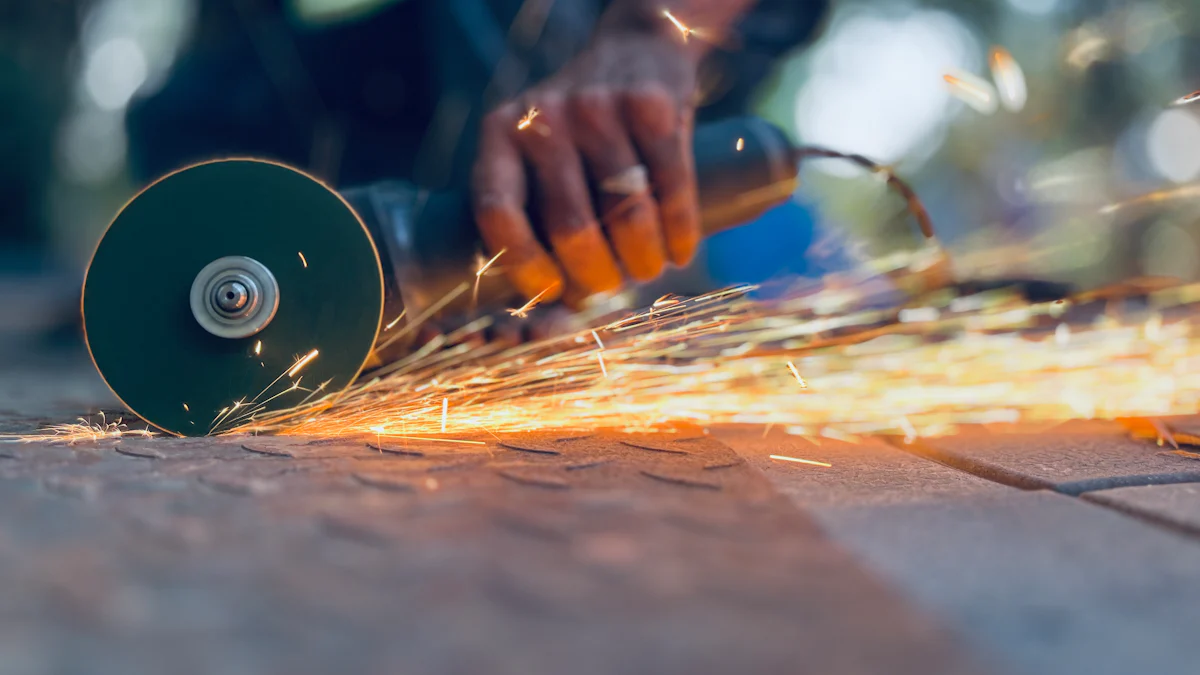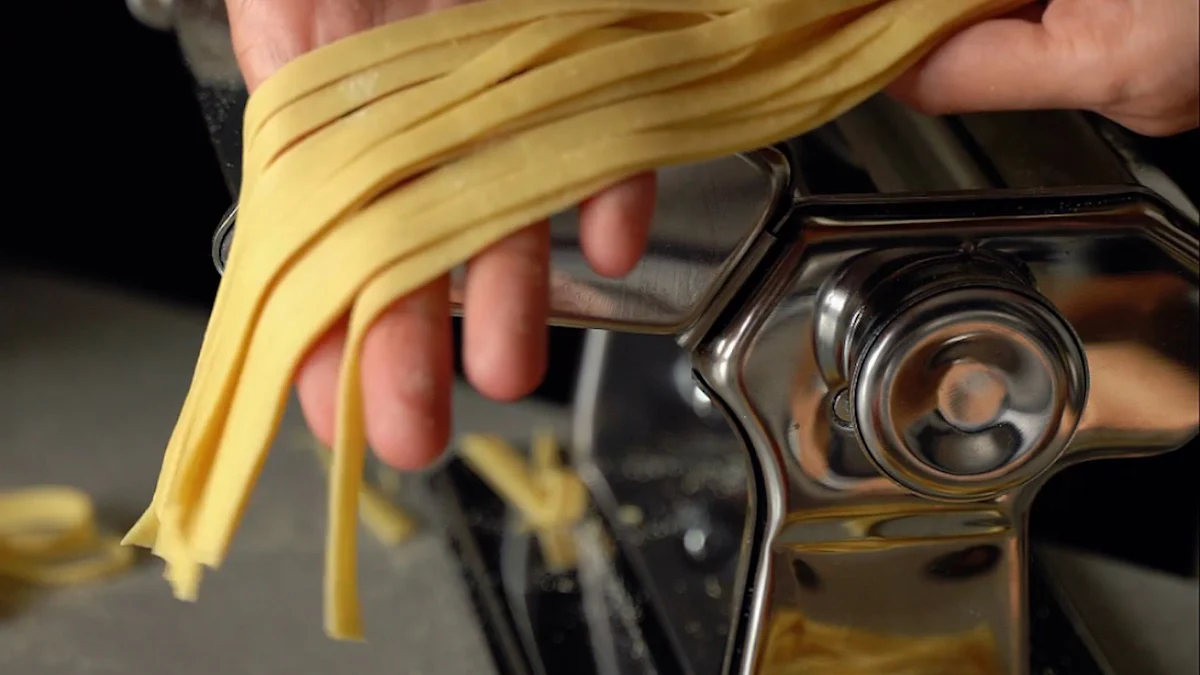

Selecting the right industrial buffing machine is crucial for businesses aiming to achieve high-quality finishes. The market for these machines is expanding, driven by the growing demand in industries like automotive and electronics. Each machine type offers unique benefits. Handheld machines provide flexibility for precision tasks, while stationary machines cater to high-volume production. Advanced automatic systems support large-scale operations. As the market grows, businesses must consider their specific needs, budget, and desired features to make an informed choice.
Key Takeaways
- Identify your specific application needs to choose the right buffing machine, whether it’s for heavy-duty tasks or precision polishing.
- Ensure material compatibility by selecting machines that can handle various materials like metals, plastics, and wood for optimal finishing results.
- Consider your production volume; manual machines are suitable for small-scale operations, while automated models enhance efficiency for high-volume production.
- Evaluate the performance features of machines, such as variable speed controls, to ensure they meet your finishing requirements effectively.
- Analyze the cost versus value of machines, focusing on long-term savings in labor and maintenance to make a wise investment.
- Prioritize durability and maintenance needs by choosing machines built for heavy-duty use, ensuring reliability in demanding environments.
- Leverage user reviews to gain real-world insights into machine performance and satisfaction, helping you make informed purchasing decisions.
Key Considerations for Choosing an Industrial Buffing Machine

Selecting the right industrial buffing machine involves understanding several critical factors. These considerations ensure that businesses achieve optimal results in their finishing processes.
Application Type
Different applications demand specific machine requirements. For instance, floor-standing polishing machines are ideal for heavy-duty applications. They handle large volumes and are commonly used in sectors like automotive and aerospace. Their robust construction and advanced features, such as multiple polishing heads and programmable settings, make them suitable for continuous usage. On the other hand, robotic polishing machines offer precise control and repeatability, making them perfect for industries requiring consistent and high-quality surface finishes. These machines excel in maintaining uniform pressure and speed, reducing human errors in the polishing process.
Material Compatibility
Matching machine capabilities with material types is crucial. Industrial buffing machines must accommodate a range of materials, including metals, plastics, glass, and wood. This versatility ensures that businesses can optimize their finishing processes across different production lines. For example, CNC polishing machines use advanced techniques to minimize machining downtime and material waste, enhancing efficiency in metal finishing. Understanding the material compatibility of a machine helps in choosing the right finishing process, ensuring superior surface quality.
Production Volume
Production needs significantly influence machine choice. Manual machines suit small-scale operations, while automated models offer increased efficiency for high-volume production. Industrial buffing and polishing machines can be operated manually, semi-automatically, or fully automatically, depending on task complexity. High-performance polishers, like those from Bosch Power Tools and 3M Company, deliver consistent results with ease of use and safety features. These machines cater to industries such as automotive, metalworking, and electronics, where high-quality surface finishing is paramount.
By considering these key factors, businesses can select the most suitable industrial buffing machine, ensuring efficient and effective finishing processes.
Comparing Manufacturers of Industrial Buffing Machines

When selecting an industrial buffing machine, understanding the offerings from different manufacturers becomes crucial. Each brand provides unique features and specifications that cater to various finishing needs. This section delves into the performance, cost, and durability aspects of these machines, aiding businesses in making informed decisions.
Performance of Buffing Machines
The performance of a buffing machine significantly impacts the quality of the finishing process. Leading manufacturers design machines with advanced features to enhance efficiency and precision. For instance, some machines offer variable speed controls, allowing operators to adjust the speed according to the material type and desired finish. This flexibility ensures optimal surface quality, especially in metal finishing applications. High-performance polishers from renowned brands deliver consistent results, reducing the time and effort required in the polishing process. By comparing performance metrics, businesses can identify machines that align with their specific finishing requirements.
Cost and Value for Money
Cost considerations play a pivotal role in choosing the right industrial buffing machine. Prices vary widely, with options available for different budget ranges. Some machines, like Floor machine ‘A’, offer significant savings over competitors, such as Floor machine ‘B’, by reducing operational costs and enhancing productivity. Investing in a machine that balances cost with value ensures long-term benefits. Businesses should analyze the initial purchase price alongside potential savings in labor and maintenance. This approach helps in determining the true value for money, ensuring that the investment supports efficient and cost-effective finishing processes.
Durability and Maintenance Needs
Durability and maintenance are critical factors in evaluating industrial buffing machines. Machines designed for heavy-duty use often feature robust construction and corrosion-resistant materials, enhancing their lifespan. Regular maintenance ensures consistent performance and prevents downtime. Some manufacturers provide comprehensive support and easy access to replacement parts, simplifying the maintenance process. Evaluating the durability and maintenance needs of different brands helps businesses choose machines that offer reliability and longevity, crucial for maintaining high-quality surface finishes in demanding industrial environments.
By considering these aspects, businesses can effectively compare manufacturers and select the most suitable industrial buffing machine for their finishing needs.
User Reviews and Feedback on Industrial Buffing Machines
Summarizing User Experiences
Real-World Insights into Each Manufacturer’s Offerings
User reviews provide invaluable insights into the performance and reliability of industrial buffing machines. These firsthand accounts help potential buyers understand the real-world applications and benefits of different models. Users often highlight the quality of finishes achieved, emphasizing how certain machines excel in delivering consistent and high-quality results.
- Performance and Efficiency: Many users praise machines that offer variable speed controls and robust construction. These features enhance the machine’s adaptability to various materials and tasks, ensuring efficient operations. Users appreciate machines that maintain consistent performance over extended periods, which is crucial for industrial applications.
- Ease of Use and Maintenance: Feedback frequently mentions the ease of operation and maintenance. Machines that require minimal upkeep and offer straightforward controls receive positive reviews. Users value manufacturers that provide comprehensive support and easy access to replacement parts, which simplifies maintenance and prolongs the machine’s lifespan.
- Cost-effectiveness: Users often discuss the cost-benefit ratio of their purchases. Machines that offer significant savings in operational costs while maintaining high performance are highly regarded. Reviews highlight the importance of investing in a machine that balances initial costs with long-term benefits, ensuring value for money.
- Durability and Longevity: Durability remains a key factor in user satisfaction. Machines designed for heavy-duty use, featuring corrosion-resistant materials, often receive favorable reviews. Users emphasize the importance of choosing machines that withstand rigorous industrial environments, ensuring longevity and reliability.
User interviews confirm and validate these findings, offering a deeper understanding of user behaviors, beliefs, and needs. By analyzing user feedback, businesses can make informed decisions when selecting an industrial buffing machine, ensuring they choose a model that aligns with their specific requirements and expectations.
Conclusion
Selecting the right industrial buffing machine is crucial for achieving optimal finishing results. Businesses must consider several factors, including application type, material compatibility, and production volume. Understanding these elements ensures that the chosen machines align with specific finishing needs. Comparing manufacturers based on performance, cost, and durability provides further insights into making informed decisions. User reviews offer real-world perspectives, highlighting the benefits and challenges of different models. By considering these aspects, businesses can choose the right finishing machines, ensuring efficient and high-quality polishing processes across various metal surfaces.
FAQ
What are Industrial Buffing and Polishing Machines?
Industrial buffing and polishing machines are specialized equipment designed to enhance the surface finish of various materials. Buffing involves using a soft cloth wheel to smooth a surface, typically with a polishing compound, to achieve a high shine. Polishing often employs more abrasive materials and techniques to remove surface imperfections and create a uniform, glossy finish. These machines play a crucial role in industries requiring high-quality finishes.
What are the benefits of using Industrial Buffing and Polishing Machines?
Investing in industrial buffing and polishing machines offers several benefits. They improve surface finish and appearance, increase productivity and efficiency, and provide cost savings. Additionally, they enhance product durability and performance, making them indispensable in sectors like automotive and electronics.
Where can you find the right industrial buffing machine?
Finding the right industrial buffing machine can be overwhelming. Valuable resources include industrial machinery suppliers, online marketplaces, manufacturing associations, and trade shows and events. These platforms offer a wide range of machines, helping businesses choose the most suitable option for their needs.
How do these machines contribute to metal finishing?
Industrial buffing and polishing machines significantly contribute to metal finishing by providing smooth and polished surfaces. They remove imperfections and enhance the aesthetic appeal of metal products. This process is essential in industries where high-quality metal surfaces are crucial for product performance and customer satisfaction.
What types of finishing machines are available?
Various types of finishing machines are available to cater to different industrial needs. These include handheld polishers for precision tasks, stationary machines for high-volume production, and advanced automatic systems for large-scale operations. Each type offers unique features tailored to specific applications, ensuring optimal results.
How does choosing the right deburring and finishing machine impact production?
Choosing the right deburring and finishing machine directly impacts production efficiency and product quality. The correct machine ensures smooth surfaces, reduces production time, and minimizes material waste. This choice is vital for maintaining high standards in manufacturing processes and achieving consistent results.
What are the benefits of metal finishing?
The benefits of metal finishing include improved corrosion resistance, enhanced appearance, and increased durability. Metal finishing processes, such as buffing and polishing, ensure that metal products meet industry standards and customer expectations. These benefits make metal finishing a critical step in manufacturing.
How do these machines enhance efficiency in production?
Industrial buffing and polishing machines enhance efficiency by automating the finishing process, reducing manual labor, and increasing production speed. They ensure consistent quality across large batches, minimizing errors and rework. This efficiency translates into cost savings and improved productivity for businesses.
Why is surface quality important in industrial applications?
Surface quality is crucial in industrial applications because it affects the performance, durability, and aesthetic appeal of products. High-quality surfaces ensure better resistance to wear and tear, improved functionality, and increased customer satisfaction. Industrial buffing and polishing machines play a vital role in achieving these standards.
How do metal finishing machines differ from other types of finishing machines?
Metal finishing machines are specifically designed to handle the unique challenges of working with metal surfaces. They offer features like variable speed controls and robust construction to accommodate different metal types and finishes. These machines differ from other types of finishing machines by focusing on the specific requirements of metal finishing processes.
